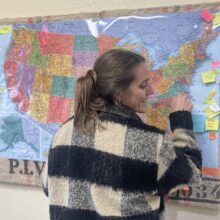The choir at North Buncombe High School was unable to perform at its annual fall concert due to the impacts of Helene. The district has 45 schools serving over 22,000 students, they were out for nearly four weeks, and the concert was scraped altogether.
During the December school board meeting, that choir came in to sing some holiday tunes and one special song they had prepared for the canceled concert.
“It was very emotional,” said Laura Mitchell, district arts specialist at Buncombe County Schools (BCS). The students sang Joni Mitchell’s “Both Sides Now.”
“I’ve looked at life from both sides now
From win and lose and still somehow
It’s life’s illusions I recall
I really don’t know life at all.”
Mitchell believes in the power of the arts and said “seeing these students come together in collaboration after being apart for a month, and all that everybody’s been through, and to have them collectively make music together has been a super healing part of the process.”
In the aftermath of the storm while school was out, she and another art educator harnessed that healing power for their communities.
The start of Art Kit Aid
Directly after the storm, Mitchell found herself directing traffic at a distribution site and helping clean out flooded houses. Her mind continued to think about students in her region, and how in the immediate effects of such an event there was a need for art.
“I kept thinking about the kids that didn’t have internet, and they lost their house, or they were displaced,” Mitchell reflected. So she put out a call out on Facebook for people to donate money for art supplies. She wanted to package art kits and distribute out into the community.
At the same time, an old colleague, Nat Barton, was hosting art pop up events for people to come together and make something when so much had been destroyed. Barton and Mitchell were both A+ School Fellows, educators who are dedicated to engaging the arts and figuring out ways to incorporate into all academic standards.
They decided to join forces and created a nonprofit: Art Kit Aid. In the immediate aftermath of Helene through the generosity of members of the North Carolina Art Education Association and other community partners, they were able to distribute 2,000 art kits in nine different counties in western North Carolina.
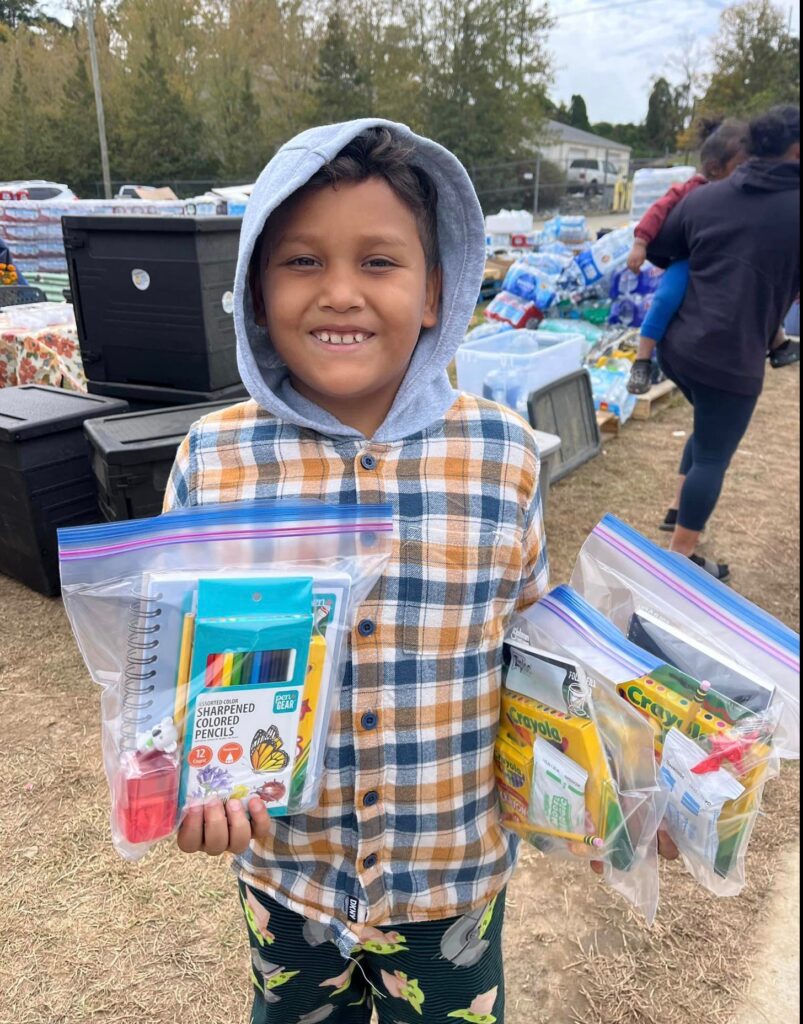
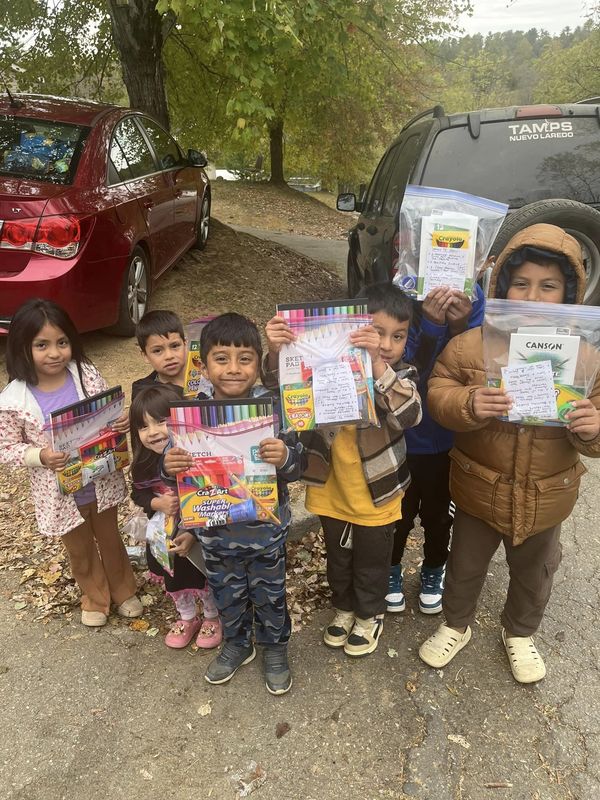

Barton continued to host pop up events at places in Asheville, and community members came to help construct the kits and make a larger project together.
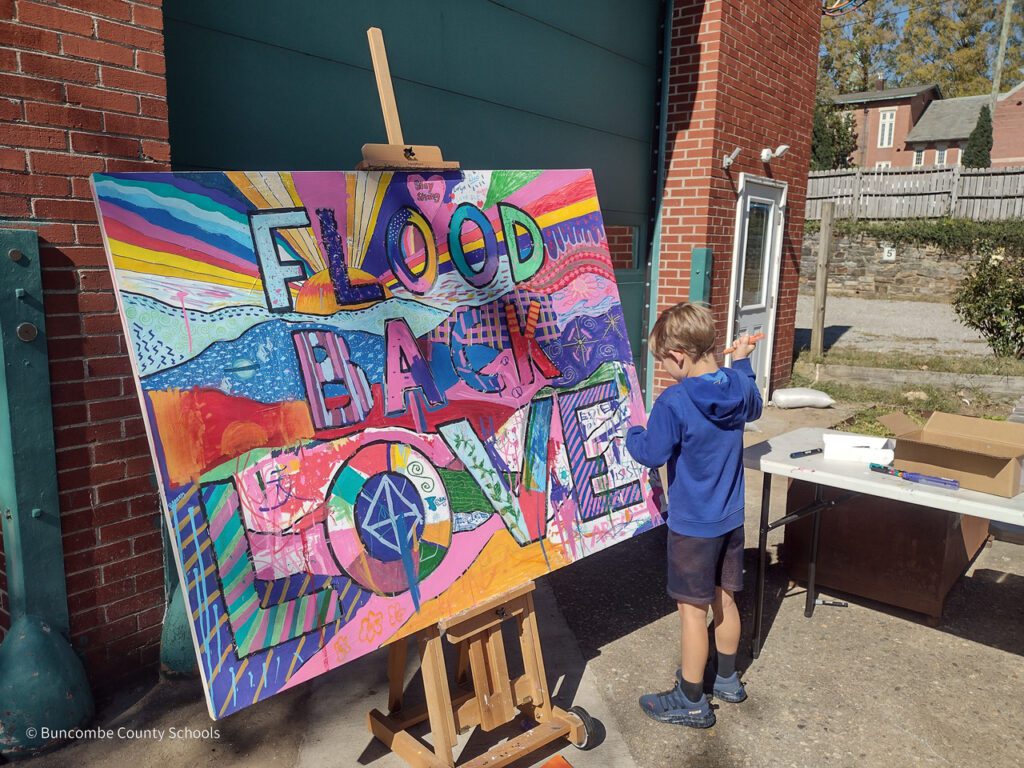
“We were able to get to so many counties, and hopefully it’s ongoing, so that we can pay it forward to other places that have devastation.”
Laura Mitchell, district arts specialist at Buncombe County Schools
The continued goal for Art Kit Aid is to provide a set of 10 art kits to every school counselor in as many schools as possible in western North Carolina.
Buncombe County Schools art after Helene
Now that schools are back in session, Mitchell continues to champion educators in her district that are using art to help students reflect on the storm. Here are some of the art projects in BCS that students have created to process, honor, and come together again.
Black Mountain Primary and Black Mountain Elementary
Prior to Helene, you could see the French Broad River from local pottery studio Highwater Clays. The storm flooded this location, but art educator Jolie Atkins had some of their clay in school. She wanted each student as well as staff and faculty members of both schools to have a piece of this special clay in the form of a memento.
“Something that ties us together as a community and all that we went through together during the storm. I have worked with every child and still working to get staff members to make theirs… everyone, teachers, assistants, support staff, custodians, cafeteria employees, bus drivers… all of us… I wanted us ALL to make one. It is a massive undertaking as it turns out, but it has been so special and there is a lot of excitement about it in our community.”
Jolie Atkins
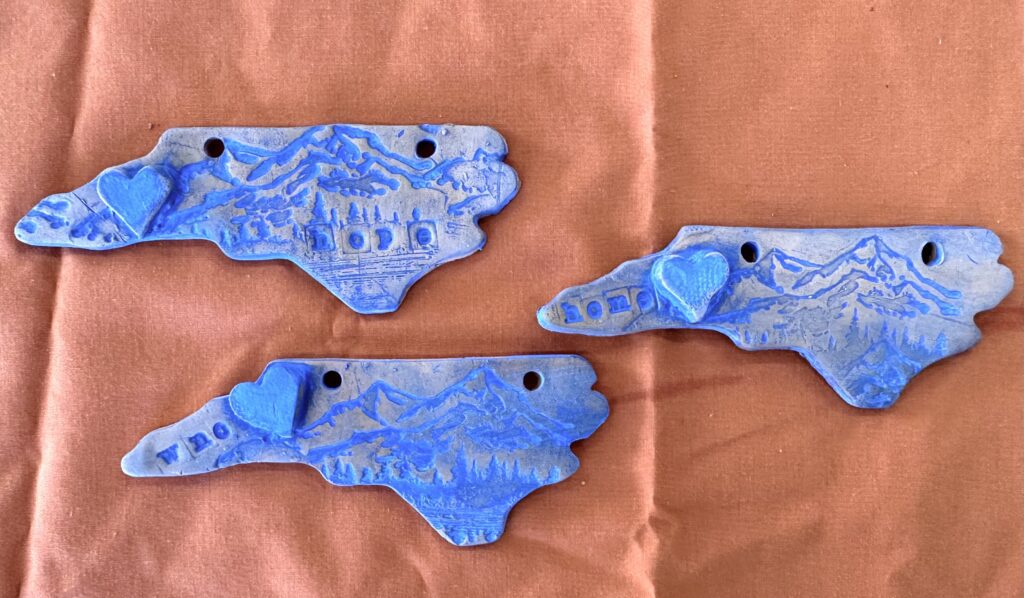
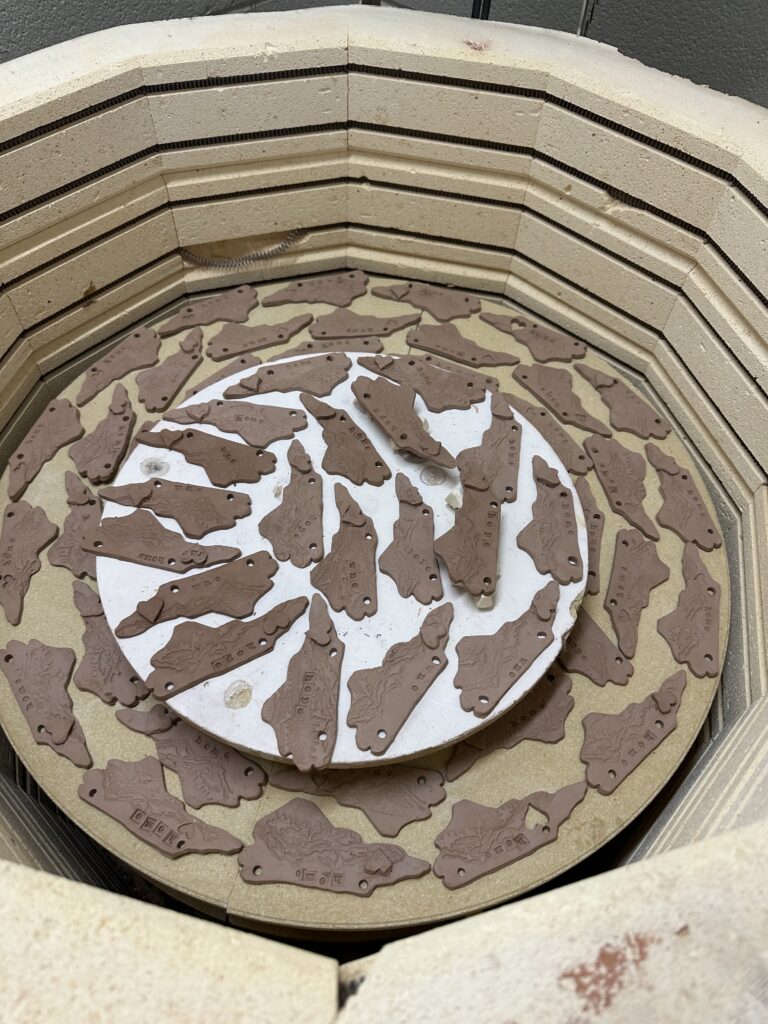
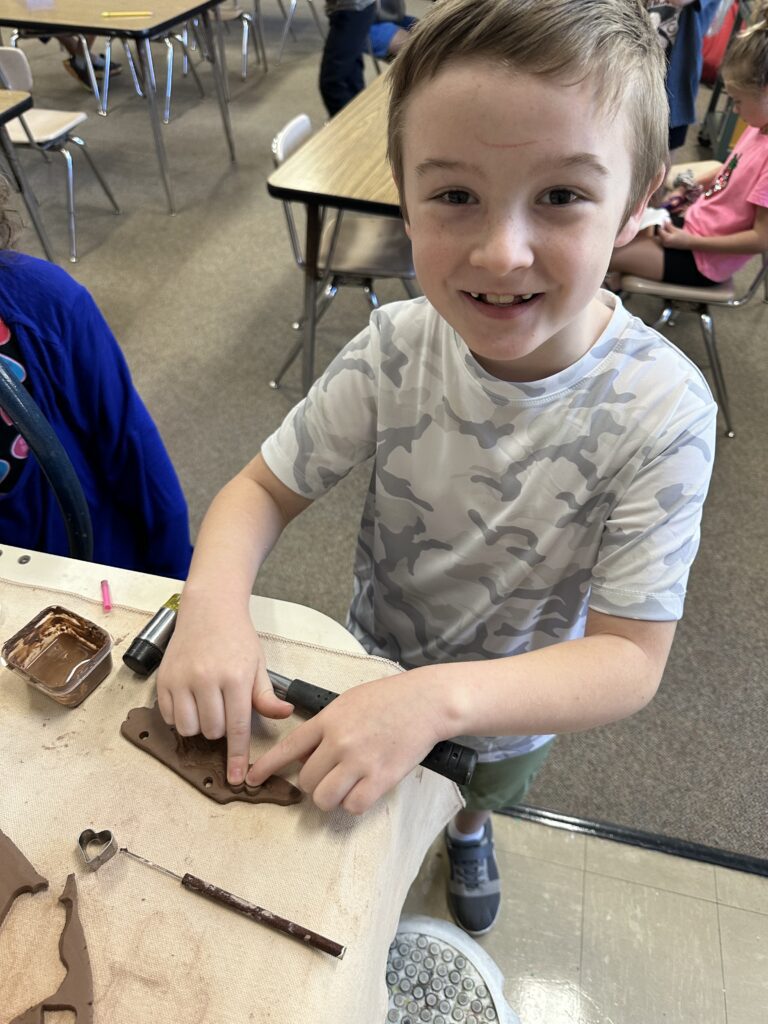
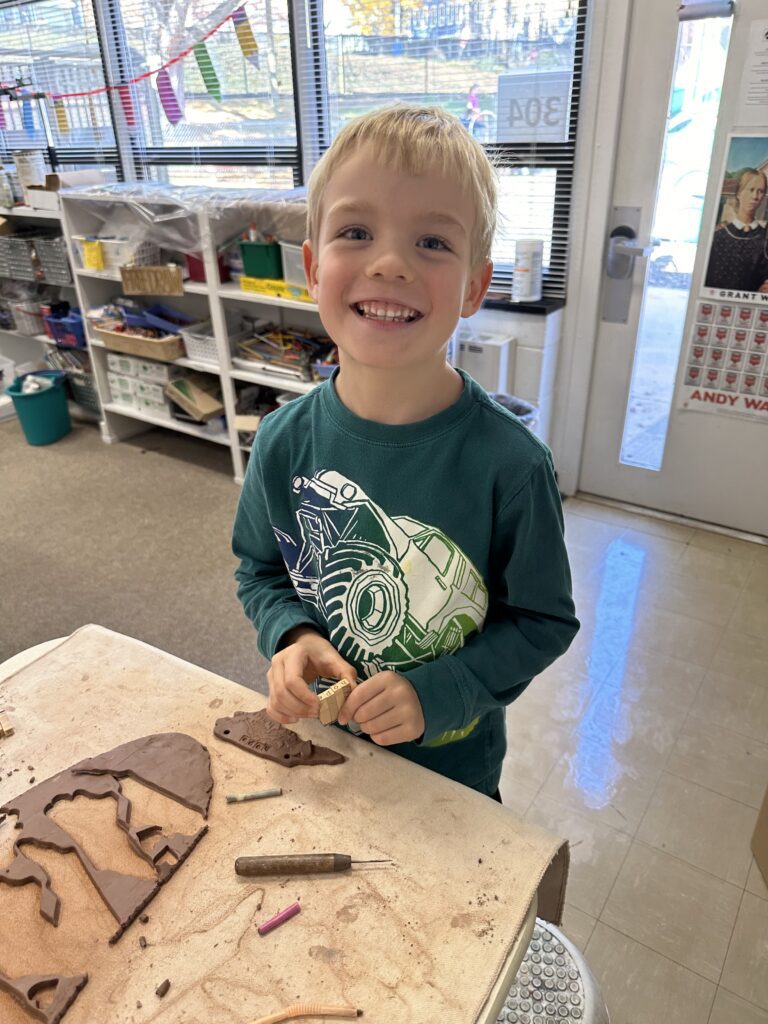
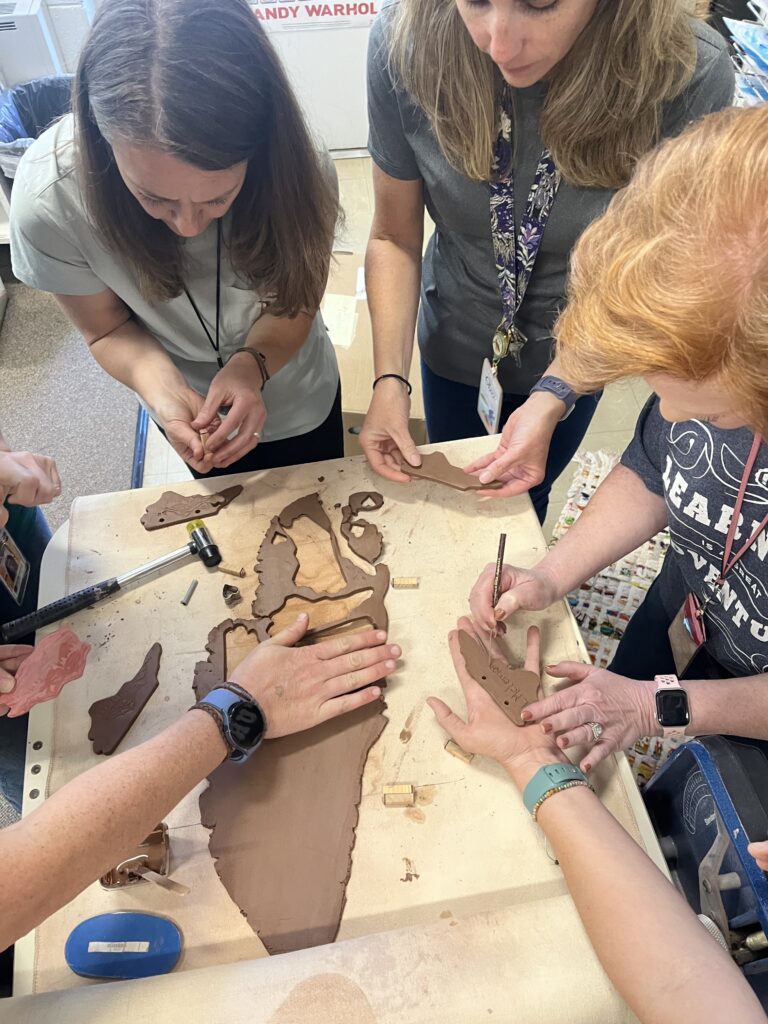
North Buncombe High
Before Helene struck, Eamon Aldridge’s Art IV class was about to embark on their “Voice in the Community” project. According to Alridge, the goal of her “Voice in the Community” project is to “Create an original work of art that expresses your views on an issue present in your community. We all walk different lives and have unique experiences that let us view our community in various ways. This is your time to use your voice as an artist to bring attention to an issue you feel is affecting your community.”
Students learned how and why artists create work that is centered around community and social issues. She also examined work from artists such as Titus Kaphar, Barbar Kruger, Dawoud Bey, Bisa Butler, and Shepard Fairey. After the storm, a handful of students created work about ways their community was affected by Helene.
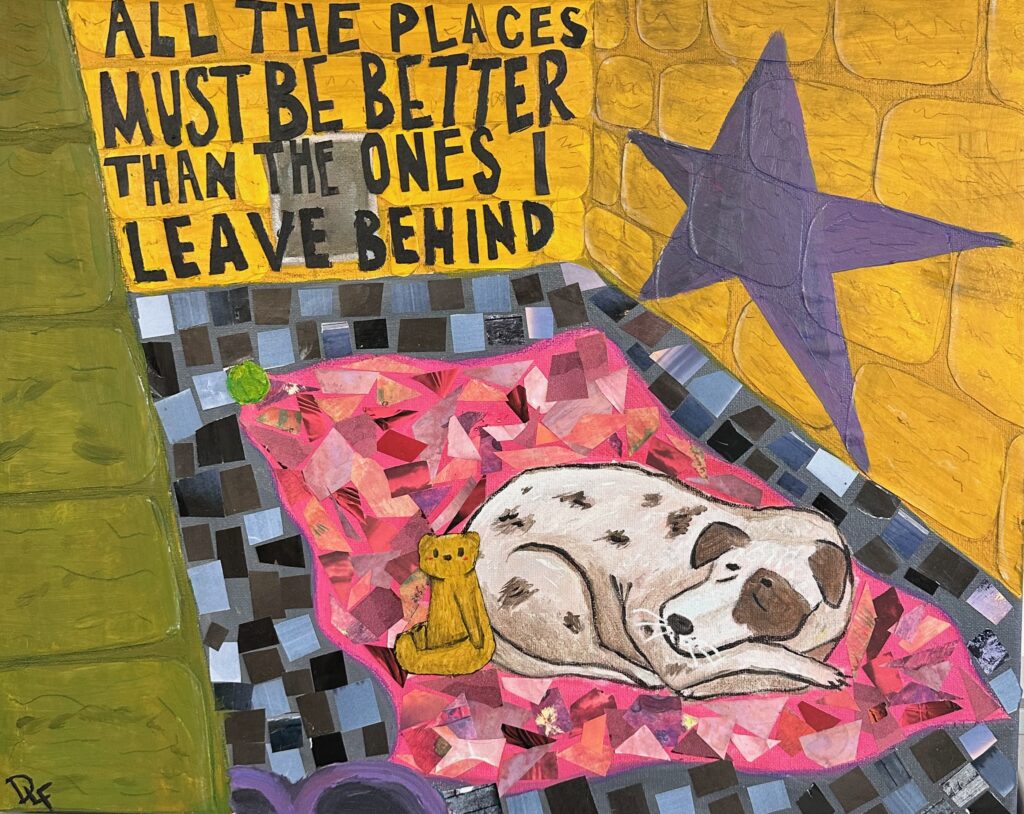
Charles D. Owen High School
In Swanannoa, this high school took inspiration from the Biltmore Estate’s Chihuly exhibit to mimic the famous artist’s glasswork using disposable water bottles.
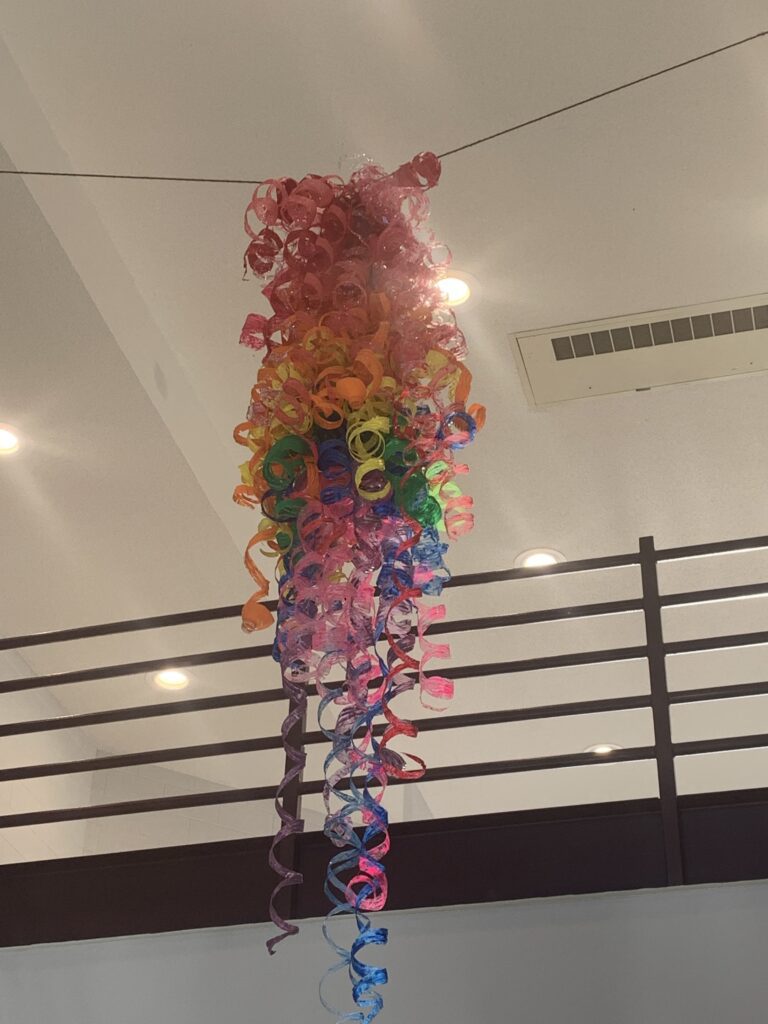

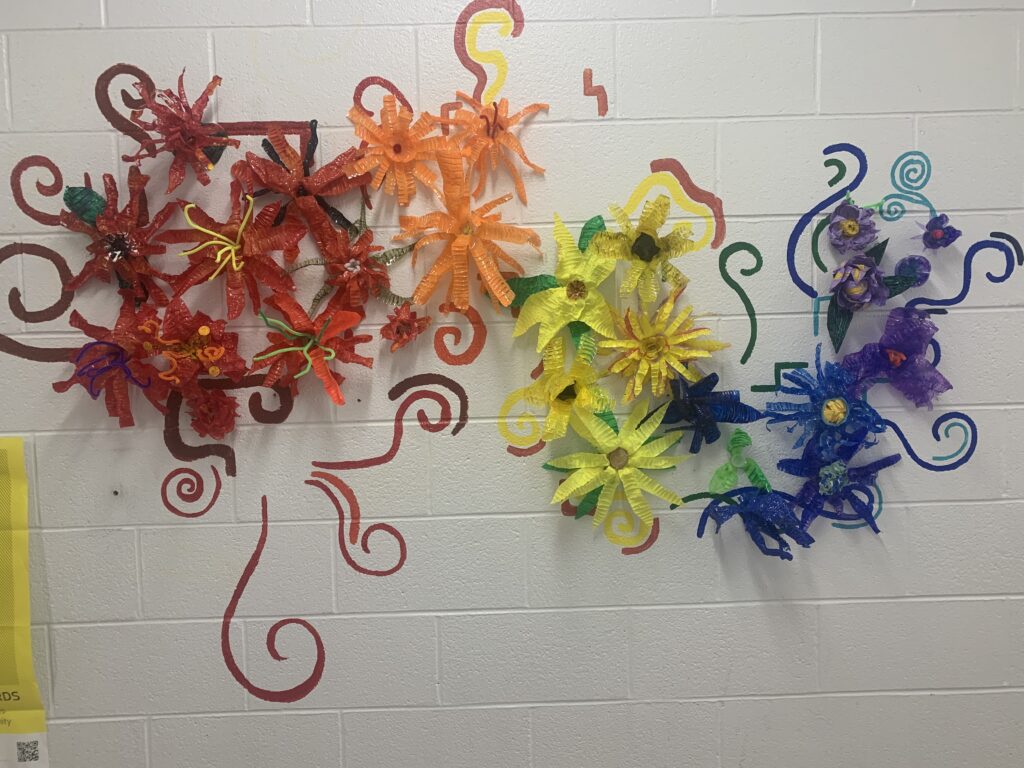
Charles C. Bell Elementary and Barnardsville Elementary
Erin Seickel is the art educator at both Bell and at Barnardsville Elementary. She worked with each school separately to do a collaborative painting. At Bell, each class designed a portion of the “Bell Strong” banner, and it was brought out all together at the first Bell Bear assembly after the storm.

On the first day returning to school after Helene, students at Barnardsville reconnected during art class and together painted the “Barnardsville Strong” banner that hangs in the art hallway.

Sand-Hill Venable Elementary School
Beth Ammons has been in the classroom for over 20 years and grew up in western North Carolina. Below, she explains her students’ project in light of Helene, and you can see all the art here.
“In this project, students worked on three layers. Layer one was an expressive layer, and students listened to music as the painted what they felt. They could paint whatever they wanted with abstract lines, shapes, and colors. Layer two was a collage layer, and students made connections with what the Asheville community is doing right now as they recover from the big storm. Building, rebuilding, putting things together, and rearranging things were all part of the process. The final layer was a self-portrait to represent their outer self. We talked about how we have layers to our personalities and identities just like art can have layers. We looked at the work of Robert Rauschenberg titled ‘Scanning’ and discussed how his collage technique seemed to tell a story.”
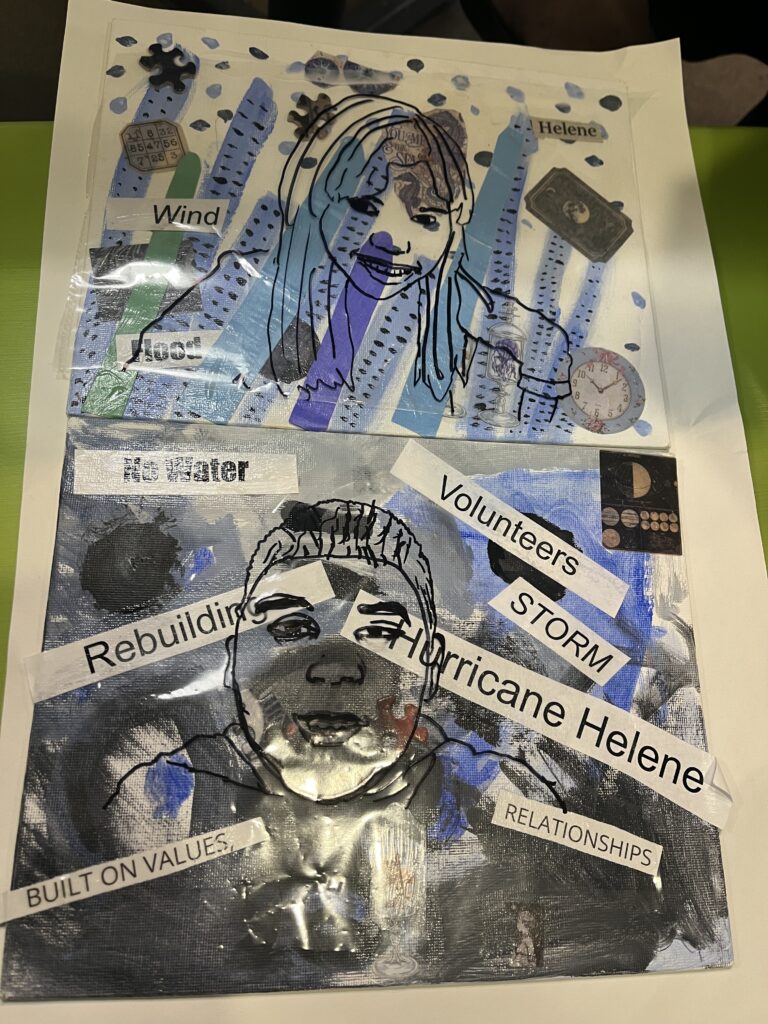
“I hope this project helped the students process all that is going on in their lives as we all work to get back to a more normal school year. I love how the layers came together and how each one is different.”
Beth Ammons
North Windy Ridge Elementary School
Russell Thompson is the fifth and sixth grade STEM and science exploratory educator at North Windy Ridge Elementary. Presented with a robotics challenge, students came up with innovative ideas to address the damages caused by hurricanes.
“Inspired by the damage hurricanes caused due to Helene and to coastal ecosystems, they focused on coral reefs, vital habitats often devastated by storms and dredging. Through extensive research, they developed the Coral Reef Life Dome and the Ultimate Flood Barrier and Filter — both portable, reusable structures designed to protect reefs from debris and wave energy during storms while supporting recovery afterward. By incorporating features like artificial lighting, sediment barriers, and climate controls, the dome aids coral survival and resilience, helping both marine ecosystems and coastal communities thrive. The barrier system works to protect coastal communities during flood surges and acts as a filter to prevent harmful debris and oils from entering into the ocean after flooding.”
Russell Thompson
Both Hawkbots and WindyBotz (teams at the schools) have qualified for a state competition with these models.






